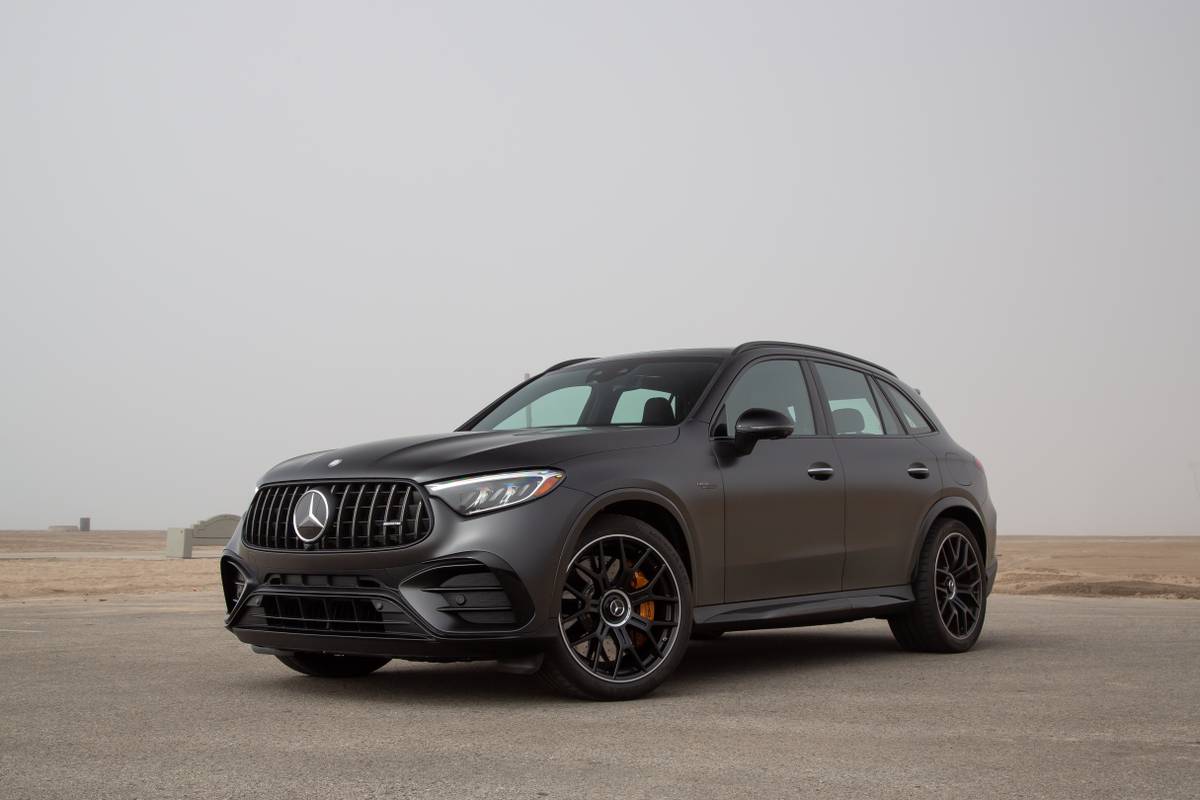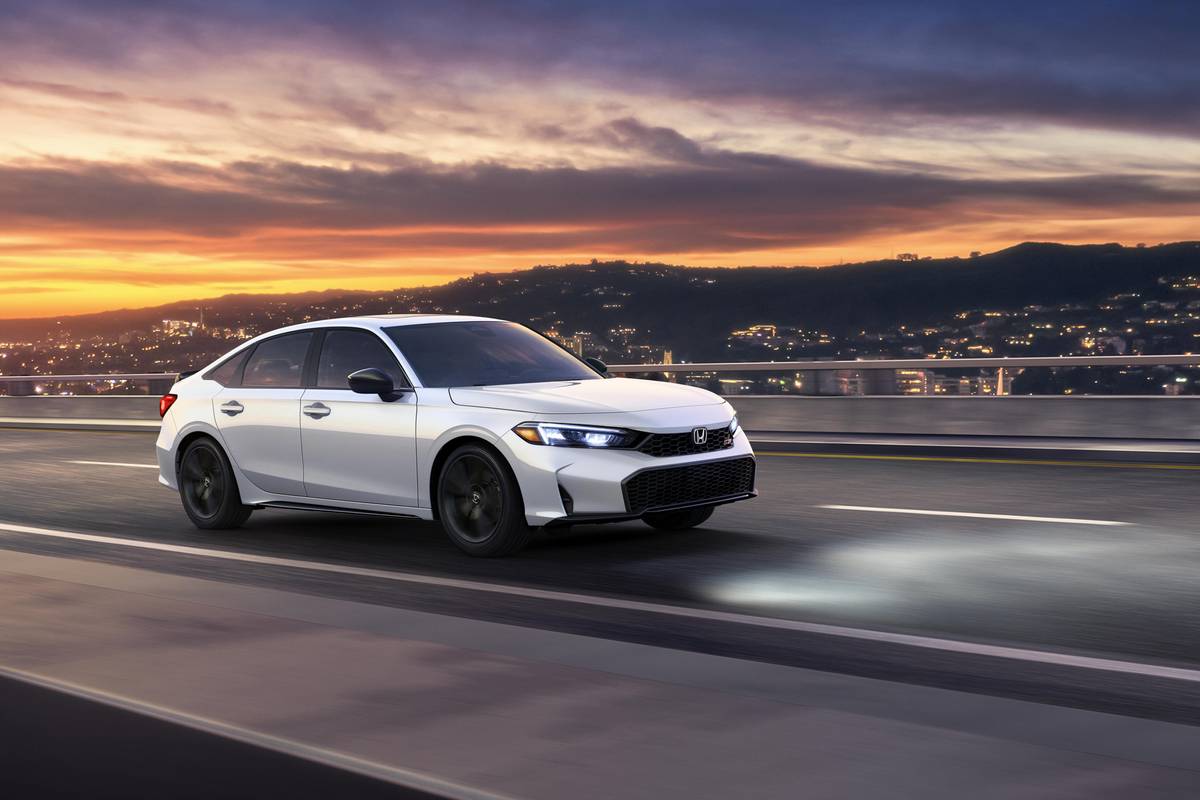chicagotribune.com's view
The `92 Saturn coupe is very nice, but at $12,750 it`s also very pricey.
For the 1993 model year, the Saturn coupe is even a bit nicer, and thanks to the addition of a lower-cost version, it`s less pricey at $10,995.
For `93, Saturn revised its two-door coupe lineup by expanding from onemodel to two. The SC coupe becomes the top-of-the-line model and is renamedthe SC2. A price leader is added and called the SC1.
The reason for the lineup shift to an SC1 was twofold: To attract morebuyers who wanted the coupe`s sportiness, but not its almost $13,000 baseprice, and to satisfy those who wanted sporty appearance but economyperformance-in other words, those looking for show but not necessarily go, as in an SC2.
We test-drove the new SC1 coupe at the preview of Saturn`s 1993 lineup in Spring Hill, Tenn., where winding, hilly streets on the assembly plant campus provide a neat little test track to put the newest plastic-body offering from Saturn through some of its paces.
The SC1 differs from the SC2 in a number of ways, none of which detractsfrom the fun of the car.
The SC2 has a low sloping nose with concealed headlamps, the SC1 has alow sloping nose with exposed rectangular lamps; it`s the same front endborrowed from the SL1 or SL2 sedans.
The SC2 is powered by Saturn`s 1.9-liter, 16-valve, 124-horsepower 4-cylinder engine teamed with 5-speed manual as standard, 4-speed automaticas optional. That`s the same combination offered in the SL2 sedan. The SC1 is powered by Saturn`s 1.9-liter, 8-valve, 85-h.p. 4-cylinder engine teamed with 5-speed or automatic, the same as in the SL1 sedan.
There`s two primary differences between the engines-mileage andperformance. The 16-valve is rated at 24 miles per gallon city/35 m.p.g.highway with manual, 24/33 with automatic. The 8-valve is rated at 28 m.p.g.city/37 m.p.g. highway with manual, 26/36 with automatic.
The SC1 we drove had automatic, and it beat the multivalve in the SC2 bya 2 m.p.g. in the city and 3 m.p.g. on the highway. Whether the SC1 or SC2,those mileage ratings are very impressive and mean a long distance betweenpullovers to refuel.
When called upon to perform the same tasks at 85 h.p. as its morepowerful 124-h.p. cousin, it`s evident the 4-cylinder in the SC1 falls 39 h.p.short. At initial acceleration the SC1 needs to take a deeper gulp when asked to leave the line quickly. When starting to navigate a steep hill, the SC1`sautomatic transmission downshifts and you have to pat the gas pedal to buildthe momentum to get to the top.
It`s not that the SC1 performs like a Yugo, rather that it haslimitations the SC2 doesn`t. In the SC2 you lope over the hills; in the SC1you lag until the trans slips back into third and you give the engine another shot of petrol.
But what you give up in performance in the SC1 you make up for byspending so little time with your local gas station operator.
We also should point out that one of our gripes from Day One with Saturnwas engine/transmission noise at initial acceleration or when kicking thepedal hard to pass or merge. Saturn has made attempts to quiet the racket for `92, and the commotion seems less disconcerting for `93.
The center console houses a button to give the motorist the option of“normal“ or “performance“ shift patterns. In the “norm“ mode you willhear noise, in the “perform“ mode, you hear far less noise while gettinglivelier action from the line or light.
So keep it in “perform“ to get quiet, but at the expense of fueleconomy. Saturn still isn`t as quiet as a Seville STS, but for $20,000 lessyou wouldn`t expect a sound vacuum, either.
As for styling, the SC1 and SC2 are fraternal, not identical, twins.Other than the headlamps, the SC2 has a sporty rear spoiler, and the SC1 goes through life without that performance cue on its back. You can get theoptional power sunroof on he SC1 just like the SC2, however. And the SC1 and SC2 sport body-color bumpers, unlike the SL1 and SL2 sedans in which the 1 hasblack bumpers, the 2 body-color.
Price provides the big distinction between the two. The SC1 starts at$10,995 with manual, $11,745 with automatic. The SC2 starts at $12,795 withmanual, $13,545 with automatic. So the SC1 is about $800 cheaper than theversion with hidden headlamps and the peppier engine.
For `93, a driver-side air bag is standard in the SC1 (as in allSaturns). Anti-lock brakes are a $595 option, about $230 cheaper than the costin a rival Toyota Corolla. When you opt for automatic transmission and ABS,you get traction control tossed in for an extra $50.
That`s a cheap price to pay for the added safety of traction controlalong with ABS. With ABS computer sensors go to work so wheels don`t lock and you don`t lose traction-and therefore control-in a panic stop regardless ofroad conditions. Traction control means the sensors don`t let the wheels slip when starting from the light, so you maintain full traction and don`t slip andslide when trying to get the car in motion.
Typically, traction control is offered in $40,000 luxury cars, not$11,000 economy coupes. Kudos to Saturn.
Another strong point for Saturn is the use of plastic body panels (except for hood and roof). That means no rust to reduce the value of your investment.The flexible body panels also mean you avoid most of those costly parking-lot dents and dings when careless motorists park too close and swing their doorsinto yours.
Changes we`d like to see, however, include making ABS standard. Saturnboosted prices by about $800 for `93, and officials said they didn`t want toscare people away by boosting stickers $600 more for ABS. The rejoinder tothat arguement is simple-add ABS but don`t charge the full $600. The $600 isthe retail price, not the amount of money it costs GM to incorporate thesystem.
Also, about the only item missing to make Saturn the industry benchmarkfor safety (without carrying the Mercedes-Benz logo) is to make a passenger-side air bag available. That`s another year way.
Finally, the peppier 16-valve engine should be an added-cost option forthe SC1. As sales volume increases, making the 124-h.p. 4 an option in the SC1also would free more of the 85-h.p. 4-cylinder engines for the higher-volumeSL1 sedans.
The SC1 comes only with 14-inch tires, the SC2 offers 15-inch treads.Ride and handling is very good in the SC1, but with 15-inch tires you probablycould be a bit more aggressive on the roadway than with the 14-inchers.
The SC1 we test drove also came with option package A, which includes air conditioning, cruise control, power windows, right sideview mirror and powerdoor locks at $1,535; plus AM-FM stereo with cassette and equalizer at $330;alloy wheels at $350; and ABS with traction control at $645. With a $300freight charge, the c ar stickered at $14,905.
By comparison, the SC2 was bumped up slightly in price for `93 to$12,795, or $1,800 more than the SC1.
With the coupe now offering SC1 and SC2 versions, the addition of a V-6engine would allow for an SC3 model in the future. Saturn officials, however, say that`s not a high priority.
Latest news



